Business toolkit / Global
How to make it
Meet trail-blazing entrepreneurs with an eye for opportunity. From a Moroccan bakery elevating pastry into a luxury gift to a Welsh mill securing its future by becoming an employee-owned enterprise, we discover how thriving businesses are achieving their aims and ask: what can they teach the rest of us?
Growth potential
The couple using bamboo to build in Sri Lanka.

When Aoife O’Sullivan and Julien Bailly moved to Sri Lanka in 2019, they saw bamboo growing all over the island, planted years ago by the government as a potential cash crop but later abandoned. The pair planned to build a hotel with this renewable resource to appeal to eco-holiday enthusiasts. But after mapping out the island’s bamboo groves, they realised the plant’s potential. So they founded Una Gama, a factory and centre to kick-start Sri Lanka’s bamboo-based manufacturing. “We’re targeting developers, architects and designers – anybody who wants to work with bamboo and innovate with the material,” says O’Sullivan.
Bamboo is 30 per cent cheaper and produces less carbon dioxide than concrete. “We realised that if we want to build with this material, somebody needs to tackle the supply chain and make it more efficient,” she says. Una Gama’s first factory (made from bamboo, of course) opens in central Sri Lanka at the end of 2024 and will produce construction-ready poles for hotels and residential projects.
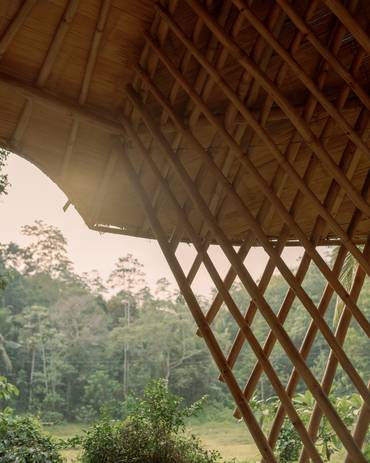

The couple still intend to make good on their dream of building a hotel but the project has taken a back seat for now. In the meantime, they are hopeful that other hoteliers in Sri Lanka will build with bamboo. “If you have a strong vision and a strong goal, there will always be an opportunity to pivot,” says O’Sullivan. “We’ve discovered a purpose that feels greater than us.”
unabambu.com
Shifting gears: Lessons from the showroom floor
Car salesman Patrick Moylett shares his hard-earned wisdom.
Patrick Moylett is director of Harrington’s of Fulham, a used-car dealership in west London. He has also found success selling tweed, property and condoms. Here he shares 10 of his top tips.

1.
In the beginning, sell quickly and…
When I was in property, I noticed that customers were slow to pay because negotiations took so long. If the setting-up costs are too big, you might become one of the 60 per cent of new businesses that fail. So I moved into selling cars: buy them, do them up, sell them. There’s instant reward.
2.
…buy cheap
In the mid-1980s I noticed that old Jaguars were quite cheap so I bought two to get started. I drove from London to Normandy in one and in Paris I stopped at an antiques shop. When I returned to the car there was a man waiting who wanted to know if it was for sale. Parisians loved the old Jaguars so I started driving to Paris once a month in one and parking it on the Champs-Élysées with a “For sale” sign on the windscreen. I made a lot of money.
3.
Decide whether you’re a lone wolf
As I was starting out, I thought, “I want to do this alone”. That’s just the way I am. Other people work better with partners. It helps if you realise this early on.
4.
Selling is easier if you don’t have to explain things
Take an existing product and market it for a new use. Marketing is the most expensive part of a young business. I started selling condoms during the Aids crisis, when their use was still considered largely contraceptive. I marketed them as a prophylactic but didn’t have to spend much on explaining what they were – most people already knew.
5.
Spot opportunity abroad
When I was in France at the age of 18, I realised that every apartment door had a spy hole, which they didn’t have in my native Ireland at the time. So I bought 3,000 of them and took them to Ireland in a box and went door to door in Dublin selling them.
6.
Look at horizontal ways of selling
After I started my condom business, Red Stripe, I began thinking about how the idea of protection could apply to other products. So I started selling Red Stripe-branded cycle gear and rain protection.
7.
Follow your joy
The use of condoms was still very controversial when I was getting into the business – Ireland was very conservative at the time. My girlfriend’s family was strongly against it. So I drew up a list of pros and cons. The con list was very long and the pro list had just one thing: I enjoyed it. So I decided to continue.
8.
Get out there
I was in the lobby of the Time Out offices in London when I overheard two journalists talking about a condom shortage. I told them that I had a business and asked whether they would interview me. I restarted my business the next day and was on the cover of Time Out. It was invaluable publicity.
9.
Choose the right name
When I bought my first car showroom, I called the company Harrington’s of Kensington, even though it was just a railway arch in Ladbroke Grove. I wanted people to associate the brand and the cars with an expensive area of London.
10.
Learn how to read people
As soon as someone comes into my showroom, I can tell whether they will buy a car from what they say and do. I’ve saved a lot of time by not chasing lost causes.
Boys and their toys
The playthings of the yuppie office.

In the corporate world of the 1970s and 1980s, when businesspeople were businessmen and lunches were liquid, the executive toy was one of the essential markers of bossdom. The executive desk might not yet have boasted any computing power but it surely would have sported a Ballrace (a chrome Newton’s cradle) or a sleek black Mercury Maze – a puzzle game whose goal was to coax a silver blob into the centre of its small labyrinth. It might also have featured an Aquabatics puzzle filled with the ingredients of said power lunch: champagne, caviar or Perrier.
These distracting office decorations and dozens more like them were dreamed up by impish English art-school pals Richard Loncraine and Peter Broxton, whose creations are now being celebrated in a new book named after their firm, Loncraine Broxton.
“I rather dislike puzzles,” says the somewhat mischievous-sounding Loncraine. “I had a background in making kinetic sculptures out of all of the postwar rubbish that was still lying around in the late 1960s. I wondered whether we couldn’t make these things smaller and shinier, and sell them as toys for adults.” Thanks to the burgeoning market for gifts bought on corporate expense accounts, Loncraine Broxton’s star rose, with a yearly turnover of about £8m (€9.5m) in the 1980s and a staff just shy of 100 people.
“It was great fun,” says Loncraine. “Research and development consisted of us having a drink at the end of the day and asking, ‘What shall we do tomorrow?’” The toys were all possessed of a wit that lightly mocked the go-getter culture while happily feeding on it: the Decision Maker allowed the busy yuppie to scribble, say, “buy”, “sell” or “golf” on a plinth beneath a swinging ball, which would randomly land on a word.
At this time, Loncraine was also directing television commercials and branching into feature films (including the 1982 adaptation of Dennis Potter’s Brimstone and Treacle, starring Denholm Elliott and Joan Plowright). He and Broxton bowed out of making executive toys in the late 1990s. As Loncraine puts it, “Secretaries were no longer wondering what they could buy their bosses for Christmas.” The book is a charming look at the ingenious minds that allowed entry to the yuppie club for less than the cost of pinstripes or a Porsche.
‘Loncraine Broxton: Innovations & Executive Toys 1969-1997’ is published on 30 November by Four Corners Books.
Havana’s neighbourhood hotel revival
The transformation of the Cuban capital’s hospitality scene.
On Sunday mornings, the tinkle of piano keys can be heard on the streets of Havana’s artsy Cayo Hueso district, between the 16th-century Old Havana and Vedado. After the hospitality sector opened up to private and international operators in 2016 (when Cuba’s socialist government relaxed its regulations), a new crop of hotels has been helping to revitalise once-forgotten neighbourhoods for locals and visitors alike.
The source of these particular neighbourhood melodies is the large, high-ceilinged café at the Tribe Caribe hotel, which opened a year ago in a grand, finely restored former apartment building that dates back to the 1920s. In the 1940s and 1950s, it housed one of Havana’s most storied jazz bars.
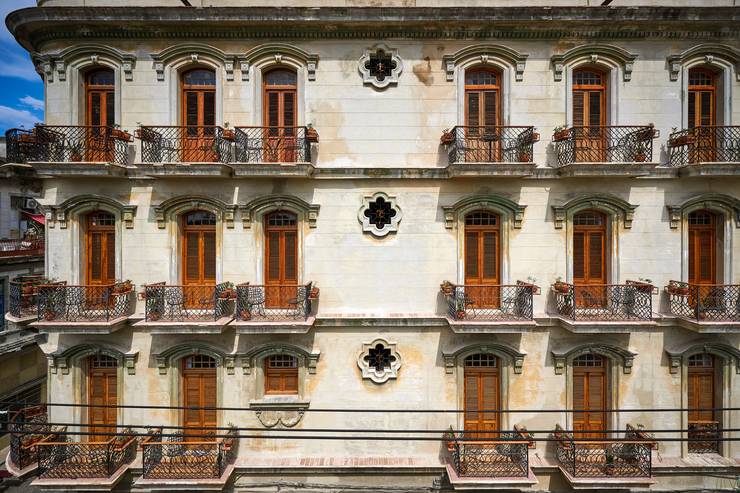
“It feels like a bit of a miracle that we were able to restore a building so important to the musical history of the neighbourhood,” says co-founder Andrés Levin, a Grammy award-winning Venezuelan-German musician, producer and songwriter who has lived in Havana for almost 30 years. He undertook the hotel’s revival alongside his business partner, Canadian investor and property developer Chris Cornell. Given how young Cuba’s private hotel sector is, Levin adds, the role that hospitality businesses can play in their parts of the city is still in flux. “We wanted to restore the building to the glory of what it once was,” he says. “But we also wanted to create a ripple effect throughout the neighbourhood.” It has begun to draw visitors to a part of the city that was often sidestepped by the million or so people who travel to Havana every year, he tells monocle.
“We knew that we wanted the hotel’s public spaces to pay homage to the city’s musical and cultural heritage but also to generate opportunities in the neighbourhood,” he says. To do so, a dedicated exhibition space, The Black Box, was incorporated into the ground floor, which hosts performances by emerging Cuban musicians, contemporary art exhibitions and film screenings.
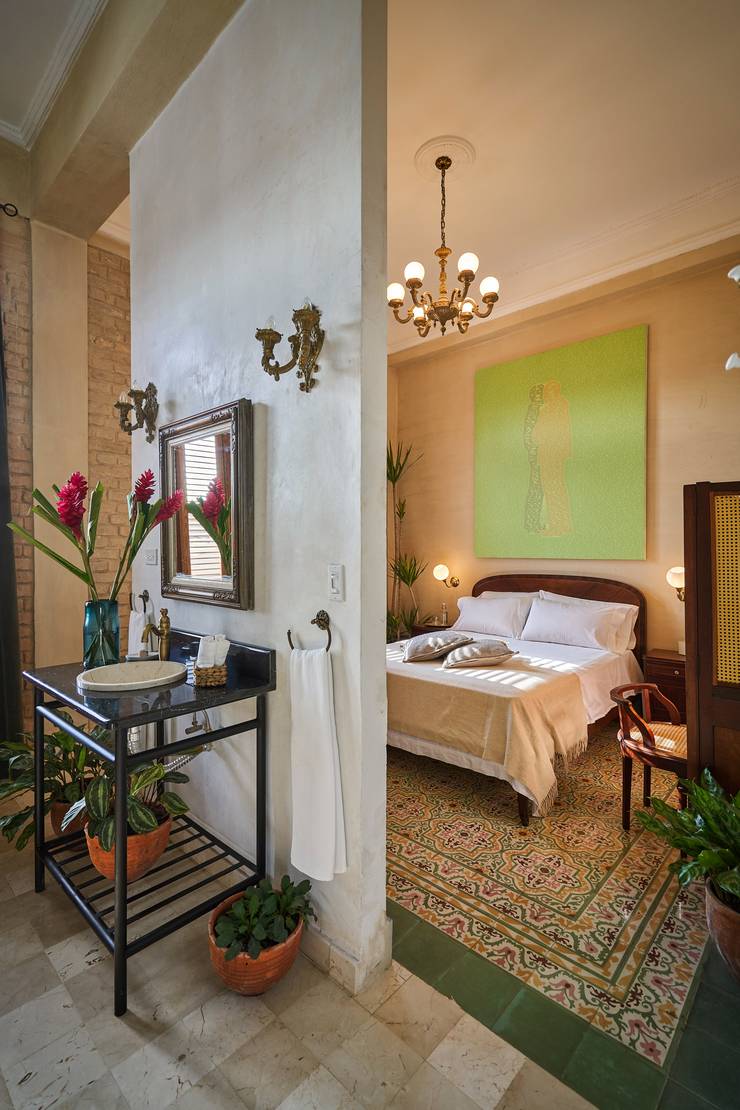
A portion of the revenue from the 11-room hotel, which has been furnished with work by contemporary Cuban artists and antique fixtures and furniture, will be invested nearby. That includes the proposed revitalisation of a historic park and a long-term plan to restore Havana’s international jazz festival and invest in local talent.
“We want this to be a model that can be replicated in other parts of the city,” says Levin. “We hope that other businesses will see what we have done here and take it as a starting point for themselves.”
tribecaribecayohueso.com
All under one roof
The new Marbella emporium that’s set to be a year-round retail hit.
The golden mile of Spain’s upscale resort town of Marbella has a new attraction. This summer, a three-storey space called Forum gradually opened its doors as a commercial hub with cafés, delicatessens, restaurants, shops and a gym. For Norwegian-born and Marbella-based siblings Sander and Synne Brendmoe of the family-owned company Antima Group, this project is about providing a year-round meeting point for locals as well as visitors.
“Beyond the beach, Marbella was missing somewhere you can enjoy a coffee while reading a newspaper,” says Sander, Antima Group’s fourth-generation CEO. “We wanted to gather everything under one roof so you could buy fresh bread, milk and coffee in the morning and enjoy a jamón serrano and a glass of wine in the evening.”
Many of the businesses involved in Forum are local. “We grew up in Marbella so it was more about finding what already works here and bringing them along,” says Synne, the company’s creative director. But there will also be a Scandinavian touch to the project, courtesy of a Swedish-owned bakery and delicatessen.

Raised between Norway and Marbella, the pair have observed a compelling shift over the past few years, with new businesses setting up shop here and greater numbers calling this slice of the Costa del Sol home. “Marbella used to just be a holiday destination but more people are now spending half of their time here,” says Sander.
This retail project is a new challenge for the siblings, who have focused on smaller-scale residential projects until now. However, a strong background in property development with Antima Group has helped them to feel confident embarking on their idea for Forum.
“We have been working with the same construction companies and carpenters for more than 10 years,” says Sander. “We called on Norwegian architects for the logistics and a Spanish team for the beauty. It’s what we call a ‘Spandinavian’ blend.” The result is an elegant and welcoming shopping centre in a chic building with plastered details and rounded windows that catch the sea breeze. Centred around a main staircase, floors effortlessly communicate with each other, thanks to an open patio plan that blends the indoor spaces with the outdoor areas, all the way from the plaza level to the rooftop garden.
To make Forum a vibrant proposition, the siblings are planning experiences such as cooking classes, flower-arranging workshops, live music and pottery making. Its tenants include Sander and Synne themselves, who have taken more than 950 sq m for their interior-design brand, Sandon; they have also moved the Antima Group’s offices to the retail complex. Together, the siblings represent a new, more low-key vision of Marbella and the next generation of the Antima Group. Of course, Marbella will continue to entice a designer-bag crowd (and we wouldn’t want it any other way) but a thought-out retail project such as Forum is also ushering in a new era for the resort town and its permanent residents. The Mediterranean lifestyle has never looked so inviting.
forum.es

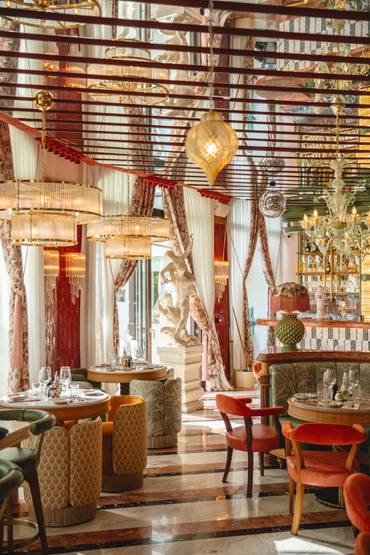
Morning glories
The disappearance of the business breakfast.

If you work in fashion, you’re likely to be familiar with the breakfast menu of every restaurant in your vicinity. After a decade in the industry – today, I’m monocle’s fashion director – I learnt a few things: where to get the best shakshuka in London, which restaurant is the most creative with its breakfast and which one overdoes it with the cream in its scrambled eggs. I have also seen the popularity of “breakfast hour” (a US tradition adopted by Londoners) fluctuate.
Before the pandemic, the industry’s most productive meeting window was between 08.00 and 10.00, a time when connections were forged, deals clinched and plans hatched. This wasn’t limited to the fashion industry: entrepreneurs met investors, bankers met private clients and expense accounts were limbered up without fear of the bill being too big.
I loved it – a breakfast meeting finds you relatively clear-headed, doesn’t last as long as lunch or dinner and, while the food is rarely life-changing, there’s less room for error if you’re ordering poached eggs.
But breakfast hour has been losing popularity. Fewer brands are willing to host group breakfasts and invitations are switching to 11.00 coffee dates or worse – virtual meetings on platforms such as Zoom.
Reduced budgets might explain the shift but it’s also a case of people becoming less willing to leave their house and come into town in a timely manner – no doubt a side-effect of the work-from-home trend and, in the world of fashion, the unfortunate rise of intermittent fasting. Colleagues across the pond and ever lark-like Australians seem to be the only ones who still set their alarms and even love to squeeze in a workout before their 08.00 appointments.
“Breakfast is for Americans,” a UK newspaper editor tells me, arguing that Londoners should have never jumped on the breakfast bandwagon. “I only accept lunch or dinner invitations.” Italians, who prefer to have a quick espresso at their local pasticceria, and the French, who grab a croissant on their way to work, seem to be in broad agreement.
We might never go back to a time when breakfast rooms fill up like they used to but at least now the best tables are easier to secure and the service is speedier. For those still open to a business breakfast, there are rules: make sure to show up early, keep the small talk brief and order smart. And whether you’re working in fashion or not, there’s no excuse for looking like you just rolled out of bed. A little effort goes a long way.
All for one and one for all
How aWelsh mill is spinning a new yarn by becoming a co-operative.
From the outside, the whitewashed stone workshops nestled in the Welsh countryside look remarkably similar to how they appeared a century or so ago, when the Melin Tregwynt wool mill was established. But step inside the facility, where some of Wales’s most striking fabric designs are made, and you’ll see that a quiet transformation has taken place – and a new yarn on how to overhaul the business model of a heritage brand is being spun.
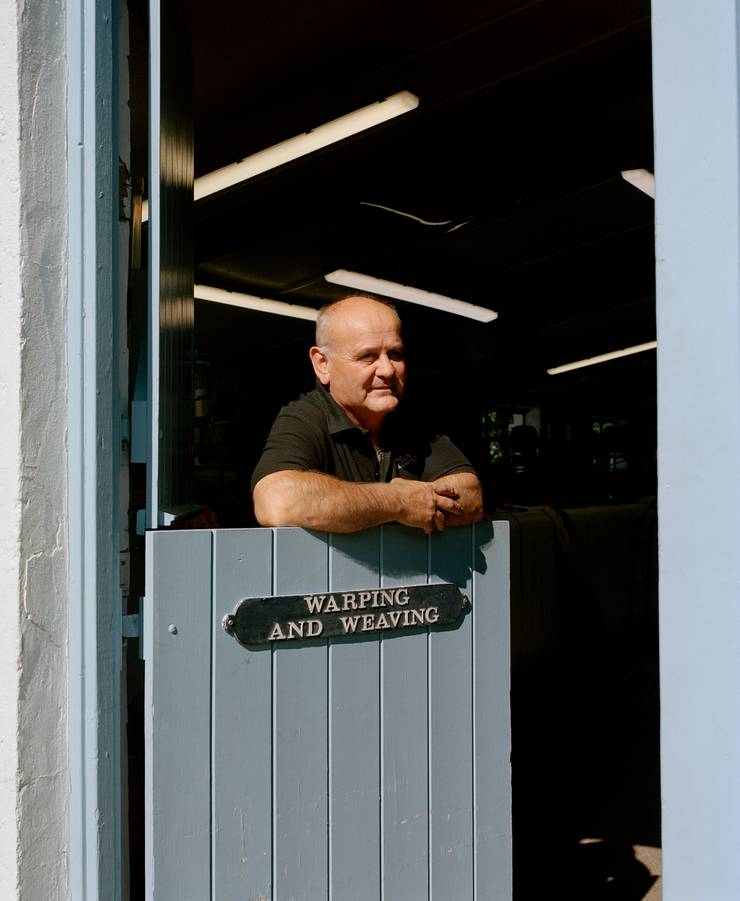
Mill manager
Melin Tregwynt’s 40-plus employees recently became the mill’s indirect owners, when it was transferred from the Griffiths family’s ownership to that of a trust for employees. “They weren’t quite sure what they were letting themselves in for,” says Eifion Griffiths, the third generation to run his family’s mill. “We knew that we were getting ready to retire,” says Eifion, who took over the company from his father with his wife, Amanda, in 1986.
“We don’t have children so we haven’t got anybody to pass it on to,” he says. “It is a big deal passing a family business on.” Selling the company outright felt like the wrong decision. “It would have been very difficult to see it being run by somebody else,” says Amanda. “This is a sparsely populated area so we are a focal point in terms of employment. We’re knitted into the community.”

The restructuring has allowed production to continue uninterrupted (five looms produce more than 1km of fabric per month), while ensuring that there is flexibility and time to develop new designs, collaborations and additional products, such as a collection of premium Melin Tregwynt yarn for home-knitters to weave with, which is currently under development.
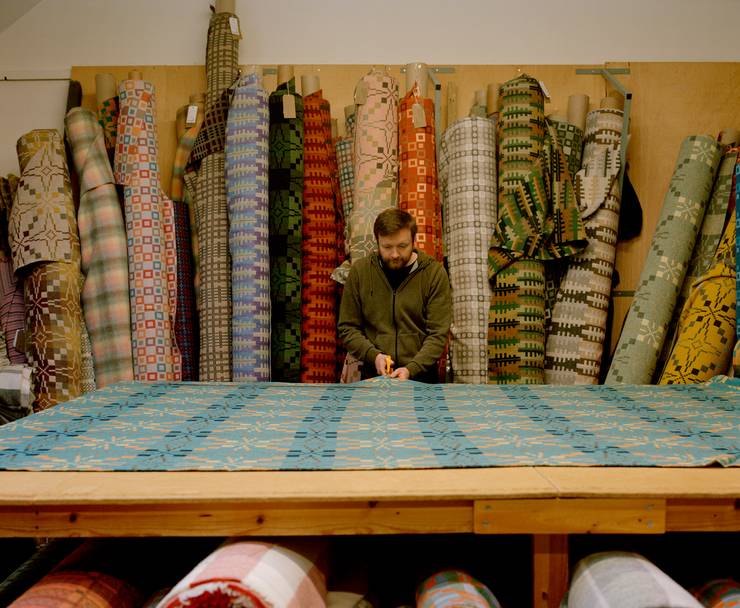
Cutting a rug
“It is very important to evolve all the time because you don’t ever want your business to turn into a museum piece,” says Eifion. “In the world of smaller businesses such as ours, there has to be some room for natural growth and this feels like a better, more modern way of passing our business on.”
melintregwynt.co.uk
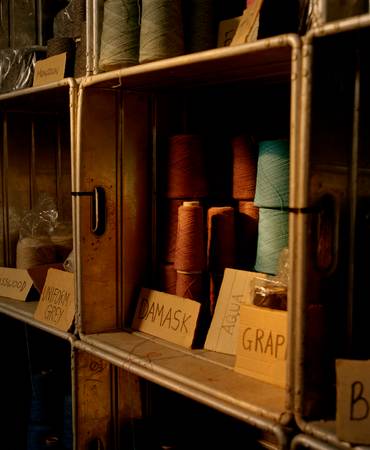
Rolls of thread
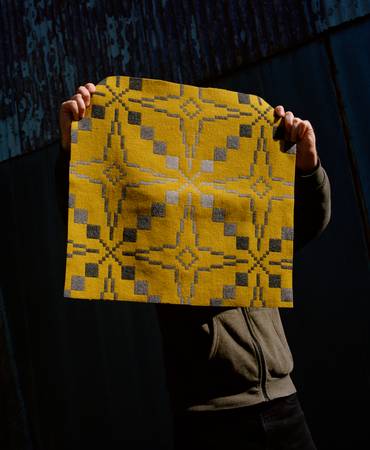
Bold pattern
Q&A: Minh Ngo
Founder, Modern Metier

Léa Zeroil and Minh Ngo
Vietnamese-Australian entrepreneur Minh Ngo founded Modern Metier as an online platform featuring contemporary European lighting, furniture and décor. Ngo’s marketplace highlights independent brands and designers working with local artisans. Having recently launched her own collection of furniture and décor with French designer Léa Zeroil, Ngo has transitioned from curator to manufacturer. She tells us why Modern Metier is less like a gallery than a publishing house.
Why focus specifically on European design?Having lived in Stockholm, London and Paris, where I’m currently based, I wanted to be able to focus on the local without limiting myself to only my French network. Keeping our attention on Europe allows my taste to be reflected in the selection but it also lets me cater to a wider customer base.
What is Modern Metier’s business model?
People like to compare Modern Metier to a gallery but I would describe it more as a maison d’édition. The idea is that we curate a list of new designers who align with our vision, while simultaneously having éditions that allow us to invest in a single designer and manage the [manufacturing] process. These are two very different activities but, as an entrepreneur, it’s rewarding to now do both.

Subtle tones
Can you share more about the process of creating the Léa Zeroil collection?
I never imagined that I would produce a collection. But sometimes an opportunity presents itself and you must seize it. I reached out to Léa because I wanted to represent her but, from our very first meeting, we decided that we should collaborate instead. Léa was the creative force and I acted more as an editor, providing a framework and guiding her with furniture quantities and what décor pieces to include. It took us about a year and a half to launch the collection in time for Paris Design Week.
modernmetier.com
Life of the community
How one business’s expansion into hospitality helped to revive its neighbourhood’s creative legacy.
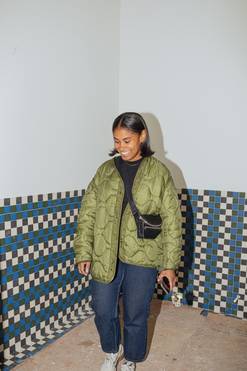
When we speak to entrepreneur Shannon Maldonado, she is busy installing furniture and artworks at a new residential project in the Queen Village neighbourhood of Philadelphia. A consultant on the development, Maldonado moved her own business, Yowie, to the area in 2017, first as a homeware shop before adding a hotel upstairs last year. Her arrival has sparked an interest in this somewhat neglected corner of the city, attracting other small businesses and cafés to open here.
“South Street is a place I came to a lot as a teenager,” says Maldonado, who grew up in Philadelphia. “It was where I got my first crazy haircut.” She explains that she wanted to preserve the neighbourhood’s countercultural legacy. “It was good for us to put down anchor here and be a part of the next wave of culture because our brand is all about supporting artists and makers.”
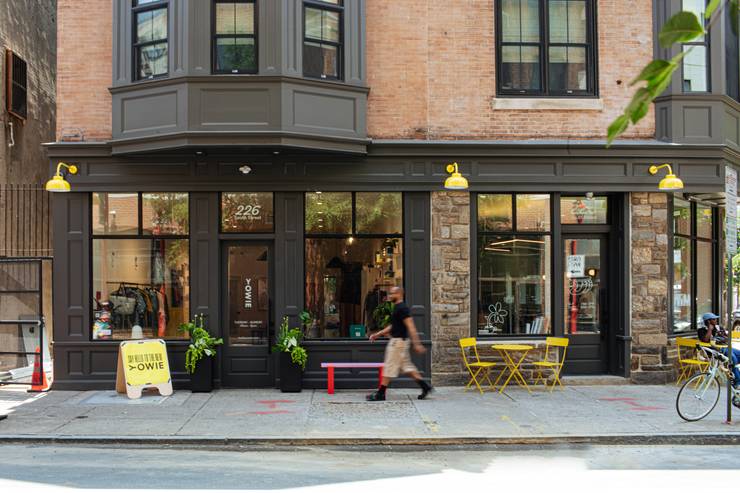
Maldonado worked in fashion before striking out on her own eight years ago. She launched Yowie as a website selling small-batch homeware before opening a dedicated shop in the neighbourhood, presenting pieces in a crisp palette of primary colours that popped in the otherwise minimalist white interior. Yowie’s momentum as a brand grew after Maldonado moved the shop to South Street. Before launching the hotel upstairs, she cut her hospitality teeth designing two other guesthouses, The Deacon in Philly and Dye House Hotel in Rhode Island, with Deacon Hospitality.
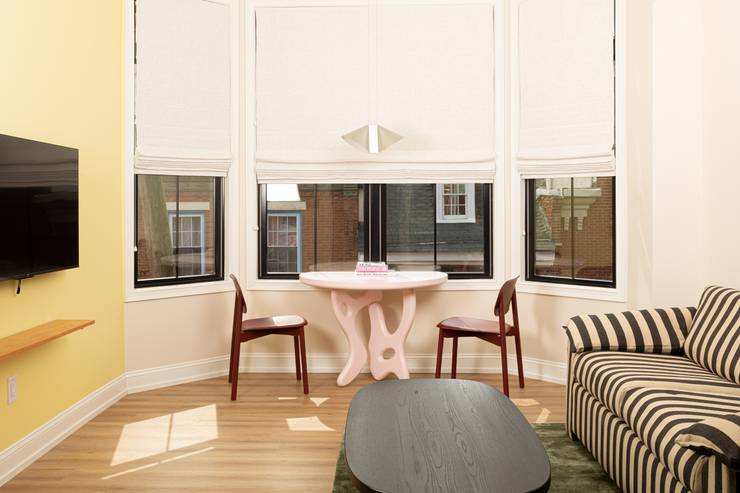
For Yowie Hotel, Maldonado has created 13 spaces that are more pieds-à-terre than conventional hotel rooms. The establishment’s roomy kitchens are stocked with handmade plates and ceramics. Everything you see is for sale, from the perky little lamps by San Francisco-based Gantri to the knobs on all of the fixtures by New York-based designer duo Chen Chen & Kai Williams. It’s a clever extension of the shop downstairs but also a platform for local talent. “I feel like I took the opportunity to trust my gut after being a creative designer for over 20 years,” says Maldonado. “This is the aesthetic that I believe in. Some people will get it and love it – and I’m also going to open other people’s eyes.”
helloyowie.com

How to make a lasting impression
The brands committing the nuances of the fashion world to print.
Entrepreneurs hoping to present a coherent vision of their work should look to the fashion world for some elegant inspiration. Many brands are dedicating time, money and resources to making printed publications. Here are five of our favourites.
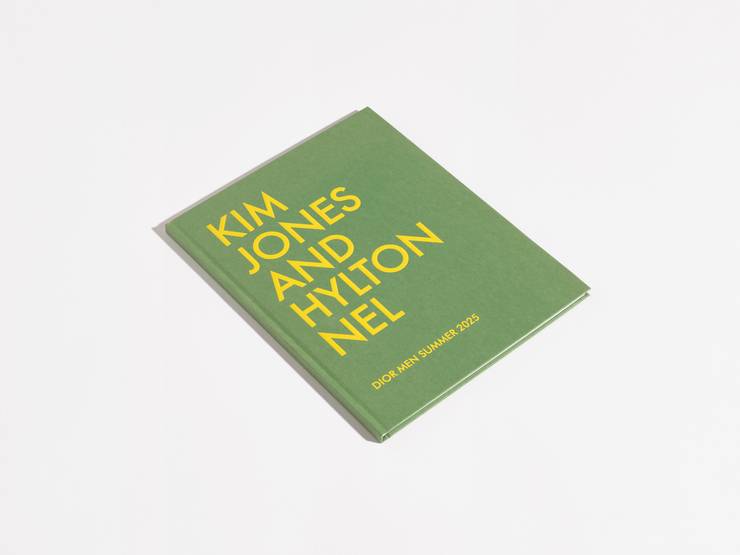
1. Dior Homme
Creative director Kim Jones has penned a tribute to South African ceramicist Hylton Nel, with whom he collaborated for the sets of his summer 2025 menswear show, in this pastel-green hardback.
dior.com
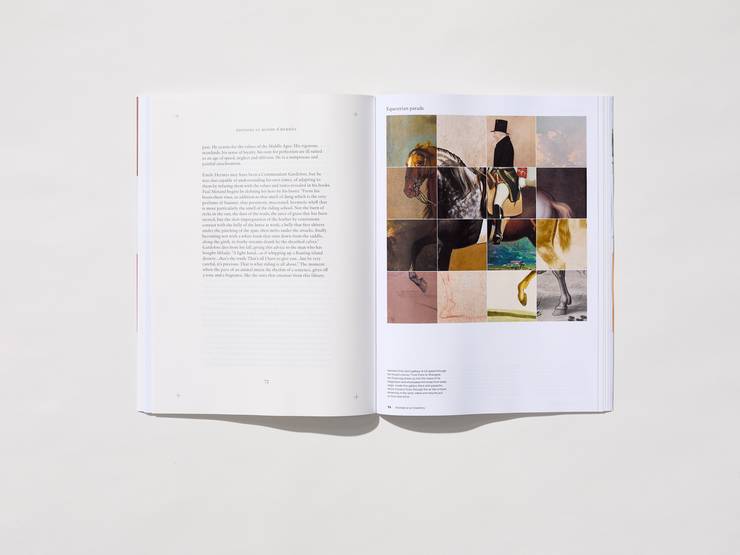
2. Hermès
Now 85 issues in, the luxury house’s Le Monde d’Hermès captures the spirit of its Parisian location on rue du Faubourg Saint-Honoré in its autumn-winter 2024 edition.
hermes.com
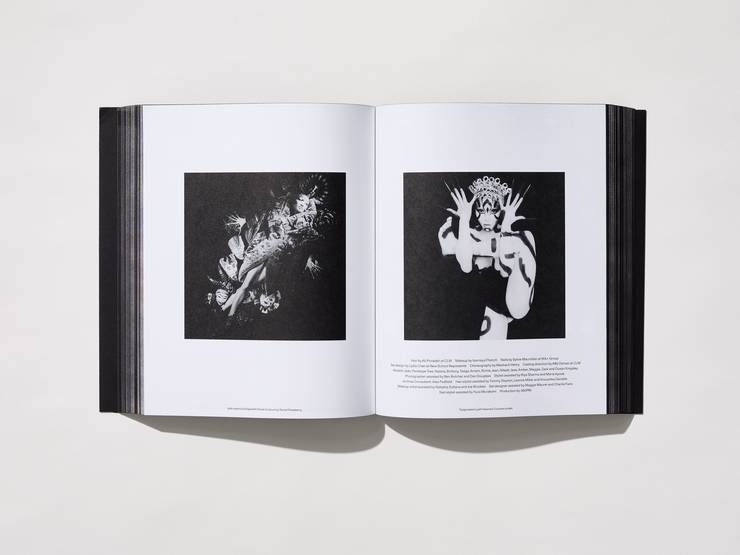
3. Acne Studios
Night time is the theme of the Swedish label’s latest edition of Acne Paper. It’s packed with eerie and eclectic photoshoots.
acnestudios.com; acnepaper.com
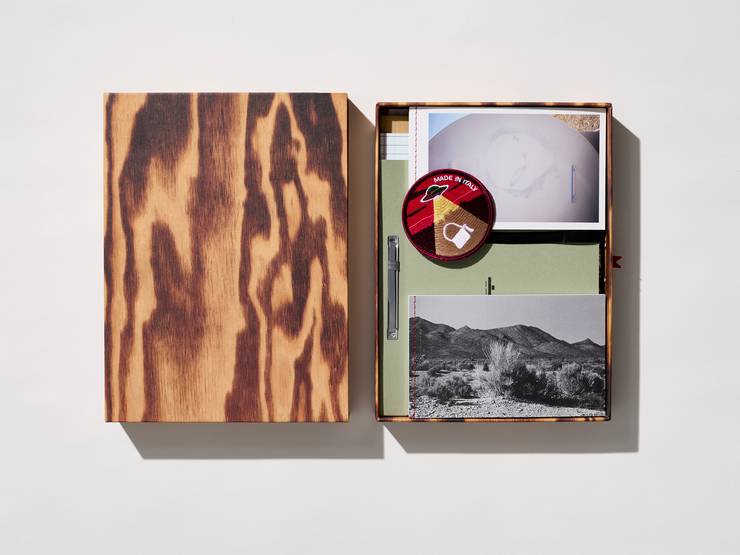
4. Bottega Veneta
The brand’s biannual comes in a slipcase that is packed with tactile print and products. The winter edition contains stickers, a notepad and a clothbound book of campaign imagery.
bottegaveneta.com
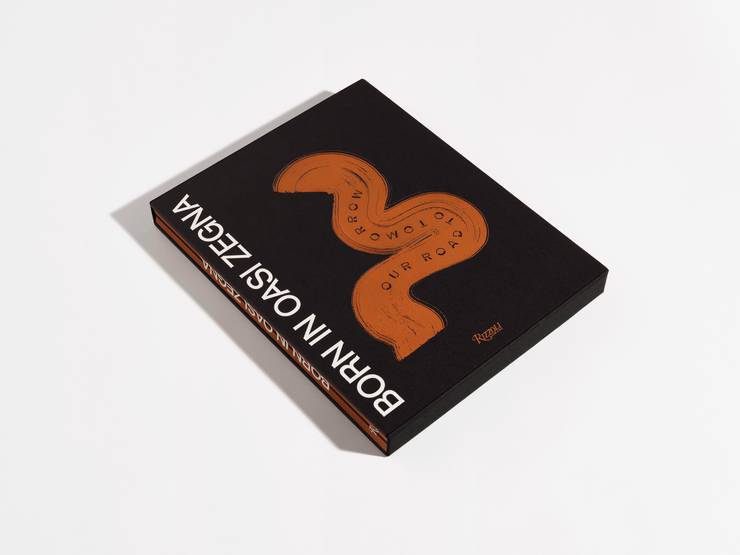
5. Zegna
Born in Oasi Zegna documents the Italian brand’s efforts to preserve its home: the natural park of Oasi Zegna.
zegna.com
PAPER MATES
MONOCLE might be just a little biased but it seems that the big fashion houses agree: paper that feels good, strong photography and considered prose tell better stories than backlit screens.
Great Moroccan bake-off
A bakery specialising in gift boxes is going international.
Pastry shop Maymana’s gift boxes have long been a beloved treat for Moroccans. Originally a teacher by trade, Naïma Berrada founded the shop and catering service in 1985 after spotting a gap in the market for traditional patisserie. Maymana quickly established itself as the place to go for gazelle horns and other quintessentially Moroccan pastries. Over the past four decades, Berrada’s one-woman enterprise has grown into a business of 510 employees, 70 per cent of whom are women.


Walk across Rabat’s upscale Souissi neighbourhood or through Casablanca Mohammed V International Airport and you are almost certain to spot Maymana’s distinctive gold lettering. The bakery’s reputation is stellar not only among the breakfasting Moroccan public but also among the country’s executives, because its wares are a top choice when it comes to corporate gifts. In a country where gift-giving holds great political and cultural significance, Maymana’s tarbouche de Fez boxes are a reliably elegant (and delicious) option. Last year, many private companies and public institutions, including the French consulate in Morocco, chose a Maymana gift box as a New Year present for their clients, contacts and friends.
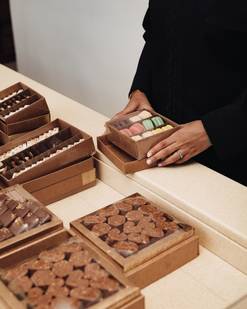
The bakery’s popularity is rightly attributed to its generously chocolate-covered dates and irresistible honey-based specialities, but equally important is the fine design detail in its packaging. With a felt exterior, faux-leather materials and gold tassels, the boxes are a modern interpretation of the fez hat – a historic symbol of Moroccan identity and a fitting gift for embassy staffers.
Maymana’s delicacies are now available in several spots beyond Rabat, in places from France to Qatar. Berrada’s daughter, Majdouline Benchakroun, is the current ceo and her younger daughter, Lamia, runs the development of the brand internationally.
The business has recently expanded its presence to the Gulf with a new shop opening in Doha in October 2024. Its tarbouche boxes are sure to be a welcome gift. The brand has solid credentials as an ambassador of Moroccan gastronomy and culture. Perhaps a European airport location is what’s needed next?
maymana.ma
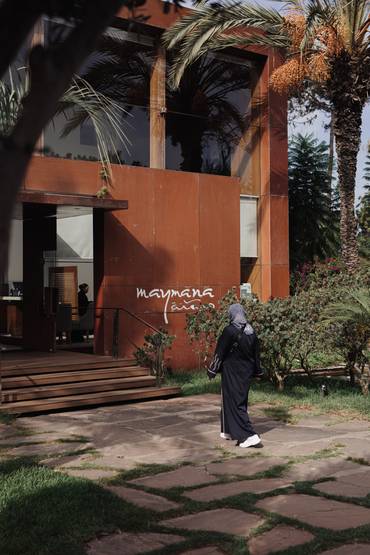
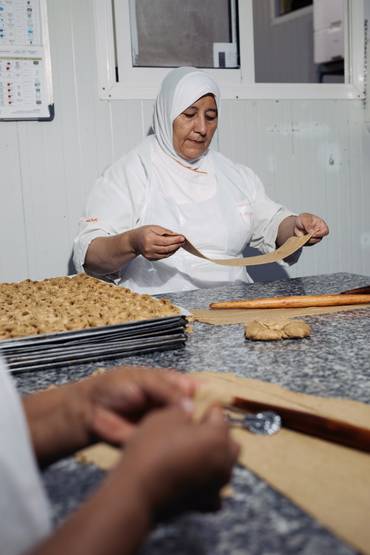
Going swimmingly
The bespoke wetsuit manufacturer that’s helping to keep Busan’s freediving traditions afloat.
Daeyang Jamsu is preserving a vital part of South Korea’s cultural heritage in a quiet corner of Busan’s Yeongdo Island. At this family-run shop, Yong Bookie and his wife, Her Mi-Ok, produce hand-cut wetsuits in their studio for the haenyeo, female freedivers who have harvested the seas for generations. The divers know that investing in tailored gear gives them the edge in the water, so they choose trusted specialists over cheaper, mass-produced alternatives.
For centuries, the haenyeo have hunted for shellfish and other sea creatures along South Korea’s coast. Historically, skills were passed down from mother to daughter but demand for such abilities has fallen; today, 90 per cent of them are aged over 60. Divers used to descend into the depths in white cotton bathing suits, using hot stones to stay warm for longer. Recognising the challenges facing these women, Bookie’s grandfather sought a solution. More than 50 years ago, he welcomed a group of Japanese wetsuit craftsmen to the island, who returned with a suitcase full of neoprene, leading to the opening of the area’s first wetsuit shop. Bookie and Mi-Ok work with three employees who specialise in carving precise lines in the rubber and stitching it together. Everything is cut by hand, leaving little waste. Whether a finger on a glove or a toe reinforcement on a boot, it’s all made to measure. “We don’t make small, medium or large,” says Mi-Ok. “Instead, we make something that fits precisely.”

The key to Daeyang Jamsu’s success is in maintaining a close relationship with the haenyeo and knowing their measurements and their wishes. Instead of online orders, divers contact the shop by phone or visit annually to buy a new suit or have adjustments made. “In the old days, divers used their suits for three years before ordering a new one,” says Bookie. “But these days they change suits every year.”
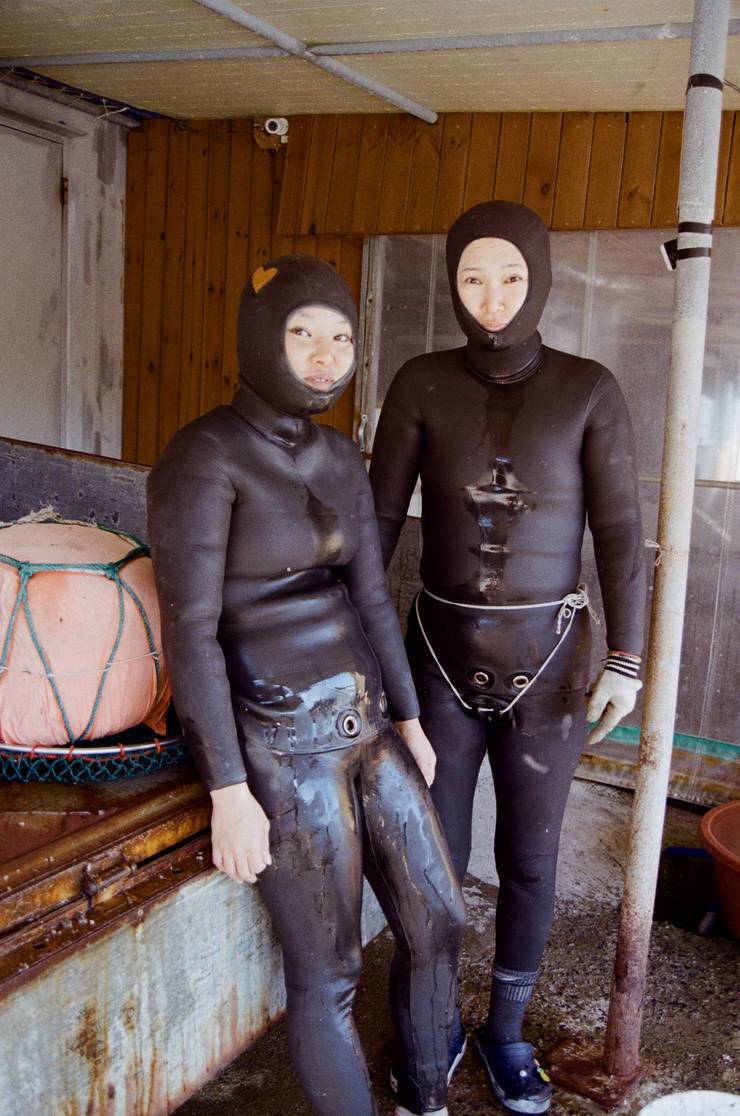
A 5mm- or 6mm-thick freediving suit typically costs 400,000 won (€270) and the team here produces more than 500 of them per year. “When I was young, many divers couldn’t pay us in money, so they paid us in seafood,” says Bookie. Fortunately, the situation has improved despite dwindling numbers of haenyeo. As one of the few remaining specialists – and with a small number of young women still keen to keep the tradition alive – business for Daeyang Jamsu looks watertight.
94 Hansarang-gil, Yeongdo-gu, Busan
The new animators
We head to Annecy to meet the creatives who are redrawing the animation industry.
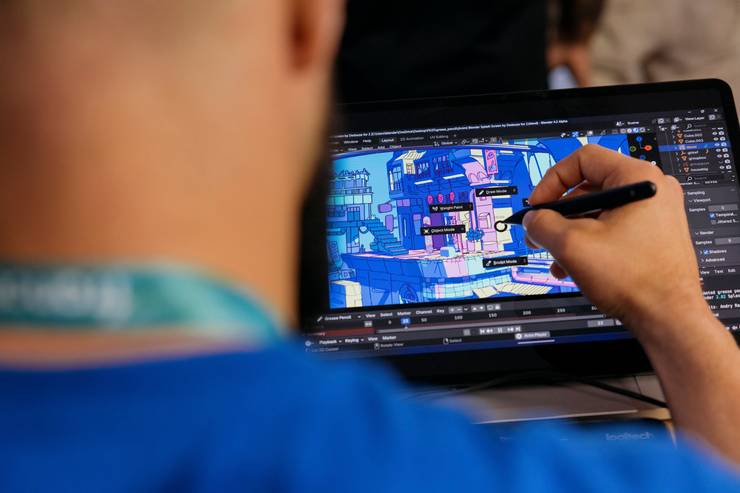
At a screening of an AI-generated music video, there are blank faces in the audience. Moments later, boos fill the hall. It is the first sign of discontent at the Annecy International Animation Film Festival. About 16,000 people from 102 countries have gathered for the flagship event of the animation industry, which is projected to grow by €200bn in the next decade. Despite these positive numbers, mass layoffs at major studios and the arrival of generative AI have left animators fearing that human artistry could soon be left behind. But MONOCLE finds a wave of artists who are redrawing the industry by blending traditional craft with new technology.
“I love the artistic possibilities of animation and the breadth of trades that you encounter on set,” says Argentinian director Rosario Carlino, who has come to pitch her film Karetabla as part of Women in Animation, a programme promoting animators from the Global South. There’s a growing confidence among artists who are embracing their heritage through animation, not least thanks to the booming export of Japanese anime to the rest of the world. “With streaming, animation has become a more global movement,” says Mitchel Berger, the senior vice-president of global commerce at Crunchyroll, who is credited with distributing almost half of the top-grossing anime films in North America. “What people once thought of as uniquely Japanese now has an audience everywhere.”
Among those present is Pakistan-based Mano Animation Studios, which entered The Glassworker, its first hand-drawn feature. “In the beginning, people said that we were crazy,” says film director Uzman Riaz. “Why would you do animation by hand when you can do it with the click of a mouse?”
However, this mouse-clicking mentality misses the point of what inspires many animators. “We put in all of this work out of our love for the art form and the audience can feel that,” says Canadian filmmaker Denver Jackson, who wrote, directed and painstakingly animated his new film, The Worlds Divide, by himself. “I won’t deny that some audiences will watch AI content,” says the film’s producer, Nicole Sorochan. “But is this algorithmic ‘more of more’ approach really what we need to be focusing on?”
Investing in craft in an industry fast becoming automated might not be as naive as it seems. “Because of AI, things that are handmade are more appreciated,” says Australian stop-motion director Adam Elliot, this year’s Annecy Cristal prize winner for best film, with Memoir of a Snail. “Films that used to be niche are reaching more people through digital technologies such as streaming.” Swiss director, producer and writer Claude Barras also believes that digital advances have benefited the creative process of stop-motion filmmaking, including his award- winning film My Life as a Courgette. “I think that 3D printing and digital cameras have removed a lot of barriers by making the process more affordable and fluid,” he says.
It’s a paradoxical claim often repeated at the festival: technological advances are allowing independent artists to preserve traditional animation approaches long abandoned by legacy studios. Smaller studios are now on track to snatch about half of the market from industry giants in the next few years. The success of these outsiders should be a reminder that, in this medium, the people who are doing the drawing are often the ones drawing in the audiences.
Cities to watch
The global outposts being refreshed by big business and new arrivals.
Knowing which way the wind of opportunity is blowing is perhaps the best instinct that an entrepreneur can possess. Yet few soothsayers will have predicted that it’s blowing towards New Albany, Ohio. With Intel building two semiconductor factories in the small city, this so-called Silicon Heartland is spurring change in the Midwest. New Albany is braced for an influx of 7,000 construction jobs and 3,000 permanent workers once the plants are running. This presents an opportunity for restaurateurs, architects and urbanists to help steer the city’s growth. State capital Columbus is even mulling whether to resume its passenger-rail service to New Albany a 40-year hiatus. Here are three other outposts of opportunity to watch.

1. Monterrey, Mexico
The workshop of Latin America is expanding rapidly with global manufacturers moving in. This means an influx of high-paying execs seeking more high-end places to dine and enjoy their downtime. See the leafy Arboleda development for inspiration.
2. Kigali, Rwanda
The Rwandan capital is building its way to new heights. Ambitious start-ups such as US drone delivery firm Zipline have made a home here and the Norrsken Foundation’s Kigali House is a dedicated home for entrepreneurs.
3. Kumamoto, Japan
The partial opening of a new factory by Taiwanese semiconductor maker tsmc in August 2023 brought a surge of arrivals to this city on Kyushu Island, which now has large-scale projects in the works.
Joining forces
How two Canadian firms reaped the rewards of a shared showroom.
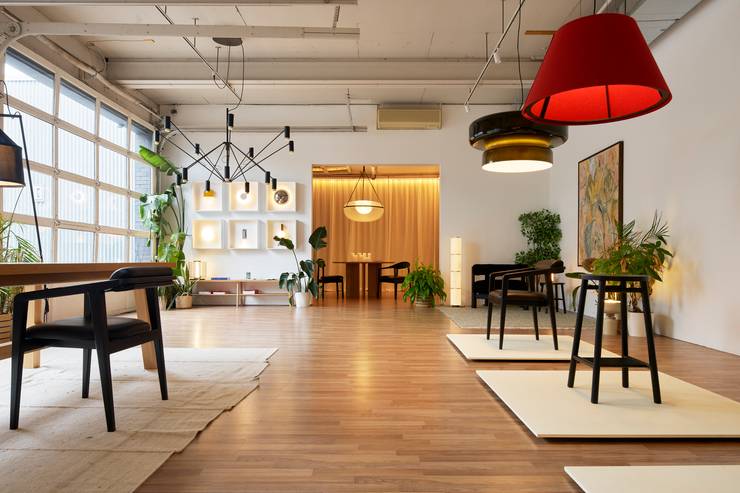
“The showroom has been essential in creating a source of inspiration for Toronto’s design community,” says Harry Callaghan, who co-founded Standard Shop with business partner Alexandra Hartford in 2020. It represents contemporary lighting designers based in Canada as well as further afield, including A-N-D in Vancouver, Belgian studio BuzziSpace and Spanish legacy brands Marset and Vibia. The company’s clients include architects and interior design practices.
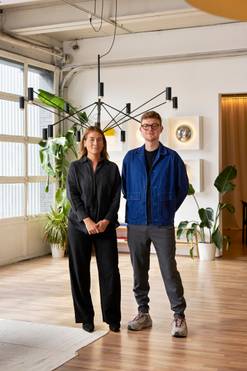
In an age of e-commerce, opening a showroom felt like an opportunity to try something new. “As a lighting agency, we wanted to move away from the standard lighting-only showroom model,” says Callaghan. “And collaboration has always been at the heart of our approach.”
This meant sharing its showroom with another Canadian design studio, Montréal-based hardwood furniture workshop Atelier Vaste, founded in in 2020 by designers and woodworkers Yannic Ryan, Frédéric Bouin, Frédérique Beaubien. Showcasing their lines in the same space has had positive effects. “We’re excited to help Atelier Vaste expand beyond Montréal, into Toronto,” says Callaghan “Its craftsmanship and use of natural materials are a perfect complement to our lighting collections. Our collaboration gives a good balance to the showroom.”
Given that each firm has built up its own customer base, collaborating on a shared showroom has provided each with access to new audiences for their products. “Our lighting agency focuses primarily on commercial and hospitality projects, which has allowed us to introduce Atelier Vaste to a broader network of commercial designers and projects here in the city,” says Callaghan. “On the other hand, Vaste has connected us to end users and high-end residential firms, so sharing our showroom has definitely expanded both of our client bases and opened up new opportunities.”
standardshop.ca; ateliervaste.com
Playing for keeps
How Chowa is crafting an alternative to disposable single-use packaging.
The market for luxury product packaging hit $16.8bn (€15.11bn) last year and, though brands are trying to find more sustainable ways to pack their goods, most of it will end up in landfill. New York-based start-up Chowa wants to bring preciousness back to packaging. It supplies high-end brands, such as fashion house Drake’s and Dom Pérignon, with kiribako boxes, which are traditionally used in Japan to store kimonos and the implements used in a tea ceremony. Chowa’s pitch is that its boxes, which are made from a pale paulownia wood that naturally keeps the contents dry in humid climates, can be kept and reused for storage by customers, while also telling a story about handmade traditions.

“Kiribako have been used to package premium products in Japan for centuries,” says founder Ray Suzuki, who grew up between New York and Tokyo. “These boxes also have an afterlife; repurposing is a huge part of [Japanese] culture.”
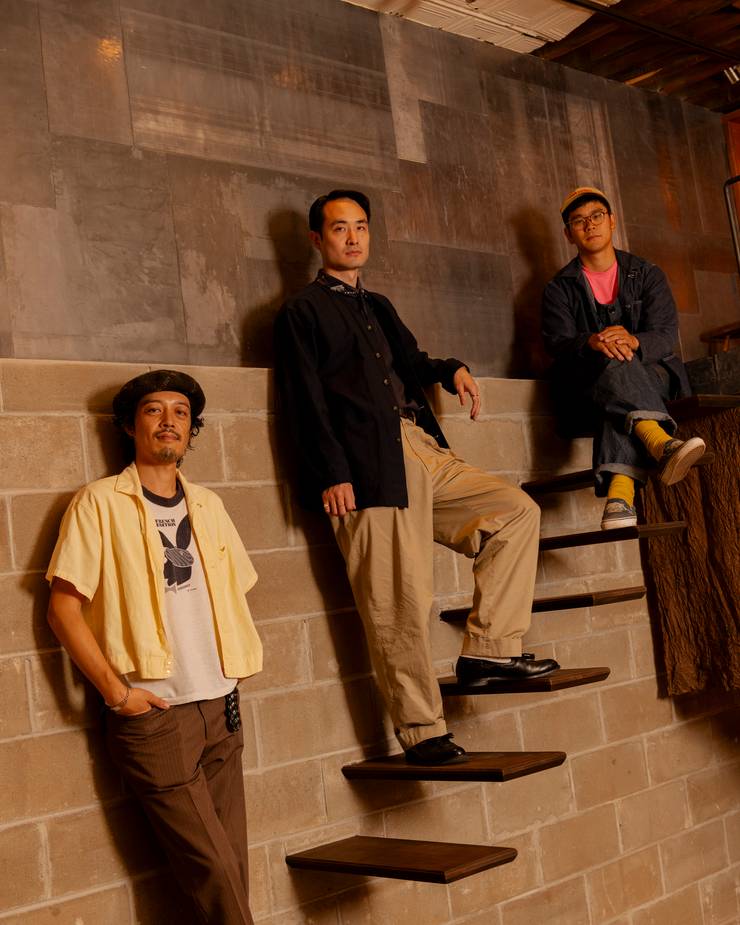
Founded last year, Chowa has quickly built a healthy client base, in sectors from hospitality to retail, and has collaborations with clothing brands on the horizon. Suzuki works with a factory in Hiroshima prefecture to make every box and initially struggled to find a partner, as many historic workshops feared that their heritage product would be thrown away once it landed on US shelves. Gaining their trust, says Suzuki, is part of the business model. “I speak to the clients one by one on behalf of the artisans. As long as they understand the care that goes into the boxes, I’m OK working with anyone.”
Chowa’s office is in a high-rise in Tribeca, with paulownia walls and a shoji window looking over the city. In July, Chowa opened a shop in Bushwick, Brooklyn, a library-like space where the brand can tell customers about Japanese craft and aesthetics through materials and architectural details. Subdued light falls across raw wooden columns and floors lined with denim from fashion brand Engineered Garments, which was founded by Suzuki’s father. The space can be turned into a chashitsu (tea room) and there is a small door to the storage area so that those entering must bow reverentially to the wooden boxes within.

“A space has the power to speak directly to the emotions and these boxes have the same sort of energy,” says Suzuki. “I want to share a certain idea about what luxury packaging can be. Luxury itself is transitioning to be more conscientious. People care about the story behind how things are made.” Indeed, some boxes are for life and not just for Christmas.
chowa.nyc
Perfect placement: Why it pays to know your audience
Ads during a prime-time telenovela will boost your brand in Brazil.
A drink has just been theatrically dashed in the face of an adulterer as the club falls silent. Cut to black and the credits roll... If you are ever looking to give your brand a boost in Brazil, this is the best possible place to be. To get yourself noticed here, nothing beats an ad shown during or after the nightly telenovela aired by the country’s most-watched television network, Globo. Despite the fact that ratings have diminished in the past decade due to the rise in online streaming, the prime-time soap-opera slot still commands almost half of all Brazil’s TV viewership. Renascer, a soap that ended in September, had a reach of 70 million viewers.
Renascer was Globo’s biggest-ever commercial hit, earning more than R$500m (€80m) in advertising. For its latest release, Mania de Você, set in the resort town of Angra dos Reis (with plenty of sunny romance and a cast frequently clad in skimpy bikinis and thigh-hugging sungas), Globo renewed its contract with Brazil’s largest bank Itaú, plus added successful partnerships with Ambev, Coca-Cola and Brazil’s beauty giant O Boticário. Brands that clearly saw the value in the daily, ahem, exposure in Brazilians’ living rooms.
For locals, the latest telenovela still holds enormous appeal – and if advertisers identify opportunities to tap into its sexy, summery vibe to liven up their new bank, beverage or botanicals campaign, then all the better.
Top of the slots: Who watches Globo?
18.00 Romantic comedies and the occasional historical adaptation. Traditionally aimed at housewives, the elderly and those after escapism.
19.00 Fast-pace adventure, laugh-out-loud comedy and beach-ready bodies. If you wish to reach young adults and teenagers, this is your slot.
21.00 The crown jewel of the telenovela slots. The stories are a mix of social issues and dramatic love triangles. With its higher budgets, expect to pay more to get your message in front of the whole family.
What happened next
Entrepreneurs from issues past are still thriving. We check in to find out how.
Businesses need perpetual motion and maintenance to adapt to change. Some fold to give way to new ventures and ideas, while others grow so much that they become unrecognisable. We leaf through The Monocle Entrepreneurs’ archives and check in on some of our previously featured magnates and merchants to see how they’re getting on. Have the intervening years been kind? And what do they have planned for the future?
1.
Edgard Chaya
BlattChaya is a family-owned cement-tile firm based in Beirut, founded by the now 94-year-old Edgard Chaya.
When we last met:
Issue 1, 2019
What we learnt then:
Chaya revived his family’s historic tile-making business, making a product that not only celebrated Lebanese artistry but that his children would also be proud to inherit.
What is new:
This year, BlattChaya participated in the inaugural We Design Beirut, a dynamic citywide event celebrating the best in Lebanese design. Despite the regional conflict, the company continues to thrive under the management of Chaya’s son, Karim, as one of the country’s last remaining makers of traditional geometric cement tiles.
blattchaya.com
2.
Simon Kim
Restaurateur Kim is the founder of Gracious Hospitality Management, the company behind New York’s Coqodaq and the world’s only Michelin-starred Korean steakhouse, Cote.
When we last met:
Issue 4, 2021
What we learnt then:
After Cote’s successful first flagship opening in New York, Kim launched a second outpost in Miami in 2021, inspired by the city’s shift from a vacation spot into a thriving metropolis.
What is new:
Today the Miami branch of Cote also has a Michelin star, while its third outpost opened in Singapore in 2024, when Kim also unveiled his second New York venture, Coqodaq, a fried-chicken restaurant in the city’s Flatiron District. Coming in 2025 are three new restaurants spread across three levels of New York’s former Sony building, as well as the brand’s first West Coast branch, opening in Las Vegas.
cotekoreansteakhouse.com;coqodaq.com
3.
Nisha Kanabar
Tanzania-born curator Nisha Kanabar founded Industrie Africa in 2018, a digital showroom and e-commerce platform that celebrates designers from around the continent.
When we last met:
Issue 4, 2021
What we learnt then:
After launching Industrie Africa in 2018, Kanabar launched Connect, an index that provided brands with access to the continent’s best designers. These platforms allowed the narrative about African fashion to shift.
What is new:
Industrie Africa now hosts about 50 designers from around the continent. Kanabar has also participated in the 2023 African Fashion exhibition at the Victoria & Albert Museum in London, which has since toured the US and most recently, Australia. On the horizon, Kanabar is eyeing up a bricks-and-mortar retail offering...
nishakanabar.com
Out of the shadows
Going undercover with Dougan Clarke, CEO of parasol-maker Tuuci.
If you have ever sought shade on a veranda or a windy shoreline, there’s a good chance that you have sheltered beneath a Tuuci. The Ultimate Umbrella Co Incorporated (or Tuuci for short) was founded by entrepreneur Dougan Clarke in 1997 and has since ballooned into a paragon of parasol production, with outposts in Florida, the Netherlands and Vietnam. Its founder’s story, meanwhile, is a masterclass in doing what you know best.
“After flunking out of college, I took a job selling patio furniture,” says Clarke, from Tuuci’s Miami HQ. “I noticed that the umbrellas that we were selling would fly away or would break and were very hard to repair.” Having grown up around boats and working summer jobs in a boat-repair yard, Clarke applied his knowledge of rigging topsails to create umbrellas that would last. “The thinking was that if we could build an umbrella that was tough enough to go on a boat, it would have a long and serviceable life in a hotel or in somebody’s backyard.”

1. Ocean Master M1 Cupola
best for: The garden table
2. Bay Master M1 Classic
best for: The hotel terrace
3. Ocean Master Max Zero Horizon Cantilever
best for: Poolside clubs
Most of Tucci’s parasols and its newer range of cabanas are made in Miami, where the firm employs 500 people, including “shade gurus” who keep the designs and silhouettes looking sharp. Clarke is certainly bullish about the brolly. “The sun is always shining somewhere,” he says. “And we’re happy to bring a little shade.”
What time are you at your desk?
As early as possible – 07.00 or so. I find that I learn more about this company early in the day or in the later hours.
What’s the best way to prepare for leadership? On the job or an MBA?
I’m not an MBA guy and didn’t excel in that world. The most powerful thing to look for in people is entrepreneurial spirit – being able to spot opportunities and capitalise on them.
Is it better to be liked or respected?
Both. That said, you’re not out to be liked but people appreciate leadership that is fair.
Do you read management books?
No, but I read a lot of magazines and I’m across the news.
What does your support team look like?
My journey as a leader has been about learning how to be more process-driven and to get people around me to take on responsibilities. You can’t do everything – no one can. I have a PA whom three or four of us at the top of the company share; I also have a clutch of right-hand people.
What technology do you carry on trips?
I have my iPhone and a back-up because I’m often near the water and these phones too often end up going for a dip. I also bring along a laptop and an iPad for visuals in meetings.
Who should make the decisions?
The CEO can’t be making every decision. They need to put the right people in the right positions to make things happen. It’s down to the leader of each organisation to recognise that talent.
tuuci.com
Front-line position
Captain’s Cut Leather is flying the flag for shopping in Valletta.
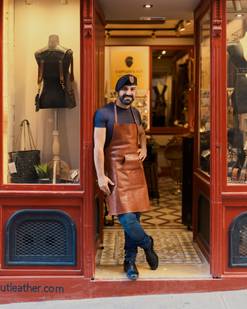
“People said that physical retail doesn’t make sense and I should only sell online,” says Keith-John Caruana of Captain’s Cut Leather, the Maltese leather brand and retailer that he founded in 2021. The self-taught craftsman has recently opened a shop in Valletta. “Leather is something that you need to smell and I make bespoke belts that people have to try on so we needed to be here.”
It was a bold move for Caruana, who is keen to change the Maltese capital’s retail dynamic. The island-nation welcomes 2.9 million tourists a year, the majority of whom visit Valletta, with its shopping scene catering to the influx. “All of the retailers serving locals are leaving Valletta – it’s just restaurants and tourist shops now,” says Caruana. “But I’ve done the exact opposite.”
A retired armed forces captain whose passion for leatherwork was ignited while stationed in Tuscany – where he watched Florence’s skilled traditional leather-craftsmen at work in the city’s narrow alleys – Caruana made his retail vision a reality with the help of his army friends. “Funnily enough, the original shop was run by a Maltese guy making boots for the British army and navy,” he says. “But it was really run down, so I got some of the army guys to come in and help me gut it. We stripped it back to reveal the original woodwork and tiles from 1921.”
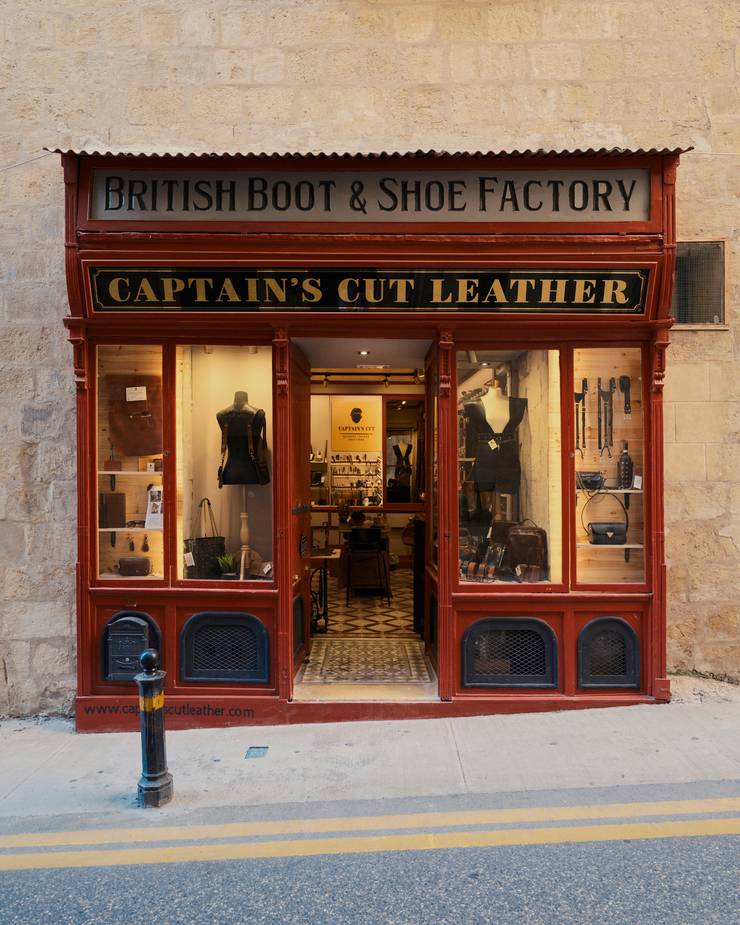
Exterior of Captain’s Cut Leather
The result is a beautiful workshop-cum-store, where Caruana puts the finishing touches on his products, takes measurements for bespoke commissions and runs workshops for apprentices. “I’ve trained 25 students from across Europe,” he says. “I want young people to understand the quality of good, full-grain, vegetable-tanned leather and get them addicted to things that matter – and I needed a shop to be able to do that.”
Caruana is taking a similar approach with his customers, who include discerning tourists (the ones who are willing to venture off Republic Street, Valletta’s main drag) and Maltese celebrities, such as pop star Ira Losco. “I want to give visitors quality souvenirs, not the made-in-China stuff that you’ll find everywhere,” he says. “And it’s good for residents too. If you’ve forgotten your mum’s birthday, you can come here and have a wallet embossed with my laser, to make her feel special.”
captainscutleather.com
Giving art a second life
The Singaporean start-up hoping to make art collectors of us all.

Chingyi Chua and Milon Goh
The idea for an online marketplace for second-hand art came to Milon Goh when a friend’s mother, an amateur collector, was attempting to fathom the resale market. Goh, a commercial lawyer based in Singapore, reached out to his former classmate Chingyi Chua, an art broker, for help. Chua explained that it was a common problem – 98 per cent of artwork is only sold once. Sensing an opportunity, Goh and Chua co-founded Art Again in 2023.
The business model is simple: anyone in Singapore who has art that they want to sell can get in touch. Goh and Chua will visit to appraise the work, taking measurements, noting the condition and learning as much as they can about its provenance. Then they photograph it and list it online. Art Again takes a 15 per cent commission if the piece sells, less than mainstream marketplaces and auctioneers. “A lot of these works have never really been discovered by the commercial market,” says Chua.
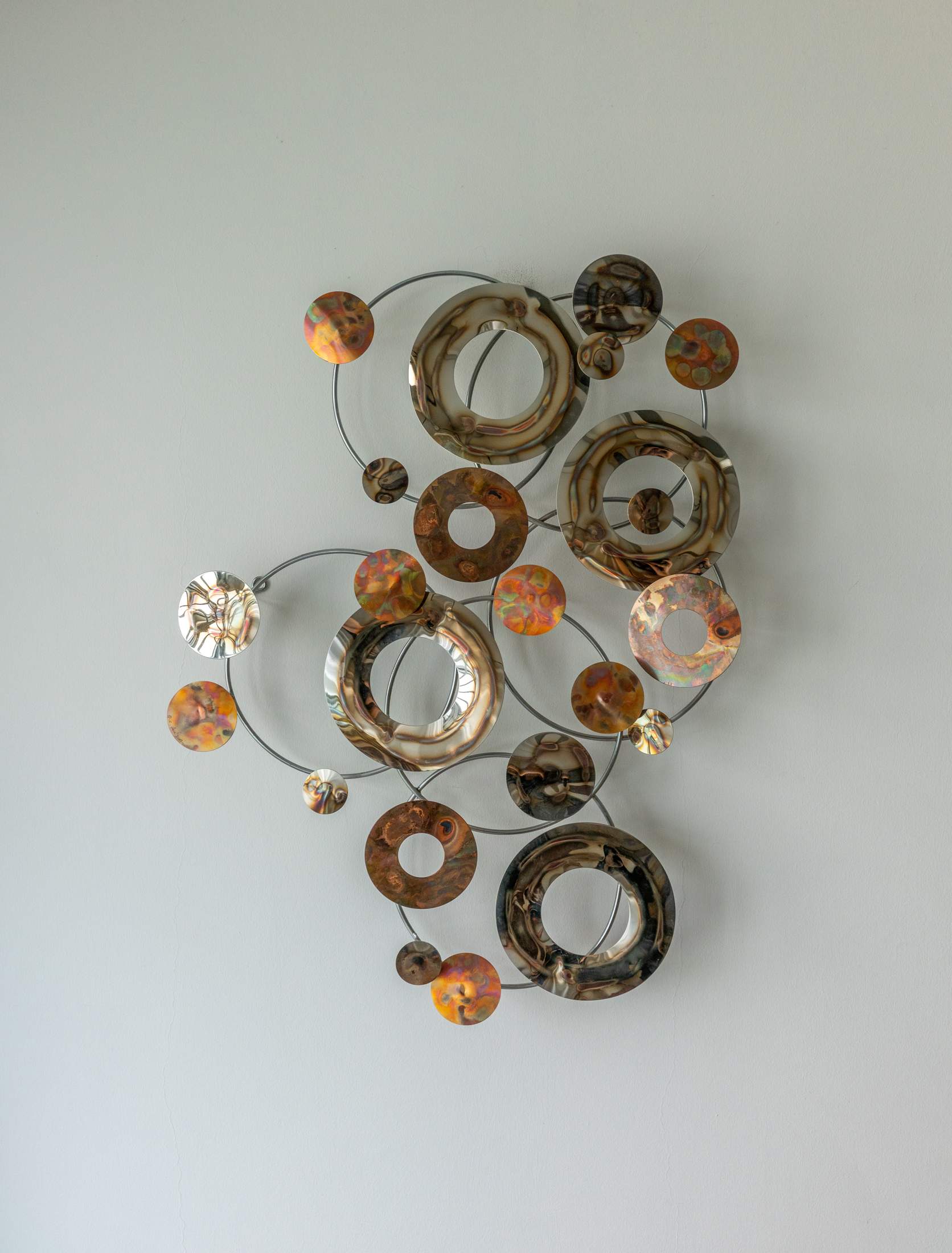
Off the wall
Art Again has listed about €1m worth of art since its launch, including work by prominent Southeast Asian artists, drawing the attention of seasoned collectors as well as new homeowners on a budget. Goh and Chua hope that the low barrier to entry will help the business to scale quickly and attract first-time collectors. “People are trying to figure out where they can spend their money and art is a nice area for younger consumers,” says Goh.
artagain.co
Smoke signals
The wildfire start-up making a difference.

On a hot, dry July morning, lightning sparked a wildfire in a Colorado canyon 37km south of Denver. Just 24 minutes later, first responders were at the scene dumping water from two helicopters and a 40-person ground crew had mobilised to hike deep into the terrain.
By evening, the fire had been extinguished, after growing to just 12,000 sq km. The risk of a hard-to-control, fast-moving blaze that could engulf nearby homes had been prevented.
Such a destructive prospect is increasingly common in wildfire-prone areas, such as the western regions of the US, the Mediterranean, Australia and Argentina. The reason why Colorado could muster such a speedy response that day? It has two 360-degree cameras mounted on mobile-phone towers. Made by Pano AI, a San Francisco-based start-up that was founded in 2020, the ultra-high-definition cameras scan, identify and monitor wildfires.
In the Mountain state, two electricity utility companes had separately invested in the Pano system, which costs $50,000 (€45,000) a year per camera. The two cameras triangulated the fire’s co-ordinates and a staffer at Pano’s intelligence centre verified the image’s accuracy to confirm that the cameras had not misidentified fog or clouds as smoke.
“We combine human and artificial intelligence to deliver the best quality of alerts to our customers,” says the company’s co-founder and CEO, Sonia Kastner. Historically, wildfire detection has relied on trained spotters in lookout towers deep in the mountains. Often, there isn’t any available land to put up new fire towers in areas near urban populations. “However, there are plenty of telecommunication towers, water tanks and other existing structures that we can mount cameras on,” says Kastner.
With $45m (€40.8m) in venture capital funding to date, Pano has sold its kit to 10 US states, from California to Arizona; it has sold five to Australia and one to a Canadian province. The company’s 30 or so customers include timber companies, ski resorts, government land agencies, energy companies, wind-farm operators and private landowners.
As wildfires become a year-round threat, technology such as Pano’s has the potential to play a crucial role. Demand for such systems, for which existing infrastructure is used and AI complements rather than replaces human know-how, is only likely to grow.
pano.ai
Print is dead. Long live print!
The independent Toronto retailer keeping magazine culture alive.

Back in 2021, Nicola Hamilton, an award-winning art director for several Canadian magazines, noticed something missing from Toronto’s media ecosystem. Despite being Canada’s largest city and home to the country’s biggest print, broadcast and media-production hubs, it seemed to lack a specialist shop dedicated to selling print. “I have worked in magazines for a decade,” says Hamilton. “But I realised that Toronto hadn’t had an independent kiosk of its own in a very long time.”
That set in motion a career shift, from designing magazines to selling them. In the summer of 2022, she established her own magazine shop, Issues, in the city’s Dundas West neighbourhood, an area already rich in independent retail. “It’s really fascinating to be on the other side of this industry,” says Hamilton, who firmly believes that magazines will continue to enrich and entertain future generations of people. “I’m used to putting a title together but seeing what customers are interested in reading and what they get excited about in the shop has taught me a lot.”
It was one piece of advice in particular, offered by Jeremy Leslie, founder of MagCulture in London, that guided her initial steps into magazine retail: begin by bringing in five copies of every title that you want to stock, assess what sells, then build up the inventory from there. “I’m the first Canadian retailer for a lot of these titles so that felt very exciting,” she adds.
The pared-back space was designed by Toronto-based Company Company as a shop and also as a gathering spot for the city’s creative folk. Issues hosts live talks with editors, writers and publishers, as well as magazine launches and other events. Demand has been so high for some of these that Issues now hosts pop-up shops and live talks in other parts of the country too.
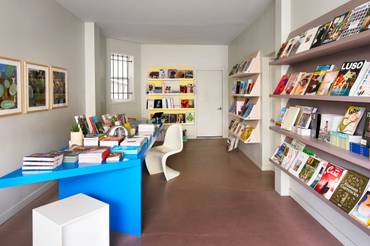
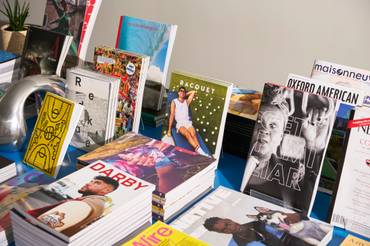
“I believe in independent media,” says Hamilton. “We encourage people to linger, browse, take a seat and ask questions. I hope that there’s plenty of inspiration to be found here.”
issuesmagshop.com
Ink big: Monetising magazine retail
Consider your inventory: Manage your stock when you start out. This will give you a clearer sense of what sells.
Expand your offering:Pop-up shops, live events, collaborations and subscriptions to monthly magazine bundles will help to broaden your customer base.
Champion harder-to-find titles: Stock familiar publications next to independent newcomers – people want to be inspired.
Q&A: Sofie Christensen Egelund
Co-owner, Vipp
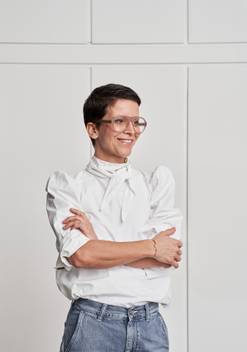
Danish design brand Vipp is known for its furniture, lighting and sleek metal bins – the company’s founder, Holger Nielsen, designed Denmark’s first pedal bin for his wife’s hair salon in 1939. Sofie Christensen Egelund is the brand’s third-generation co-owner and concept director. Here, she tells us about steering the family business into the world of hospitality with its growing line-up of chic guesthouses and design-led cabins (there are nine to date).
Why the move into this sector?
The starting point was when we asked ourselves, “How do we allow people to connect with our products in an immersive setting where no one is monitoring them?” We know that the products that we make are very high quality so we can handle people looking at them closely – in a way, it’s almost like test-driving a car. This is how you test-drive a kitchen.
Can hospitality be part of the evolution of the showroom experience for brands?
There’s a lot of money being put into the showroom experience. Many high-end brands, especially in fashion, have offered clients an immersive experience by opening hotels. Our way of doing this is a little different. When we open guesthouses, we’re being very intentional with what that word means. You almost feel as though you’re staying with someone – it’s very personal.
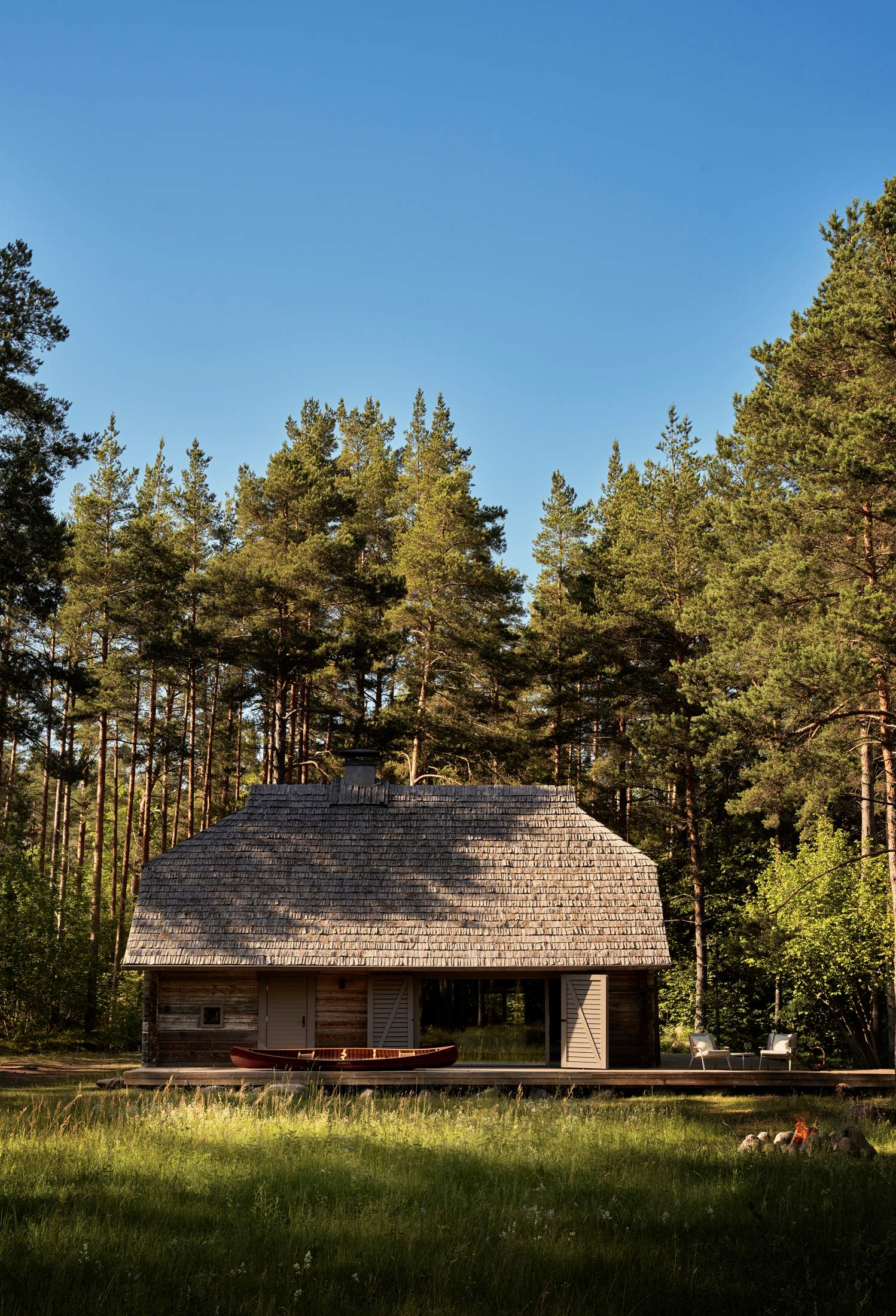
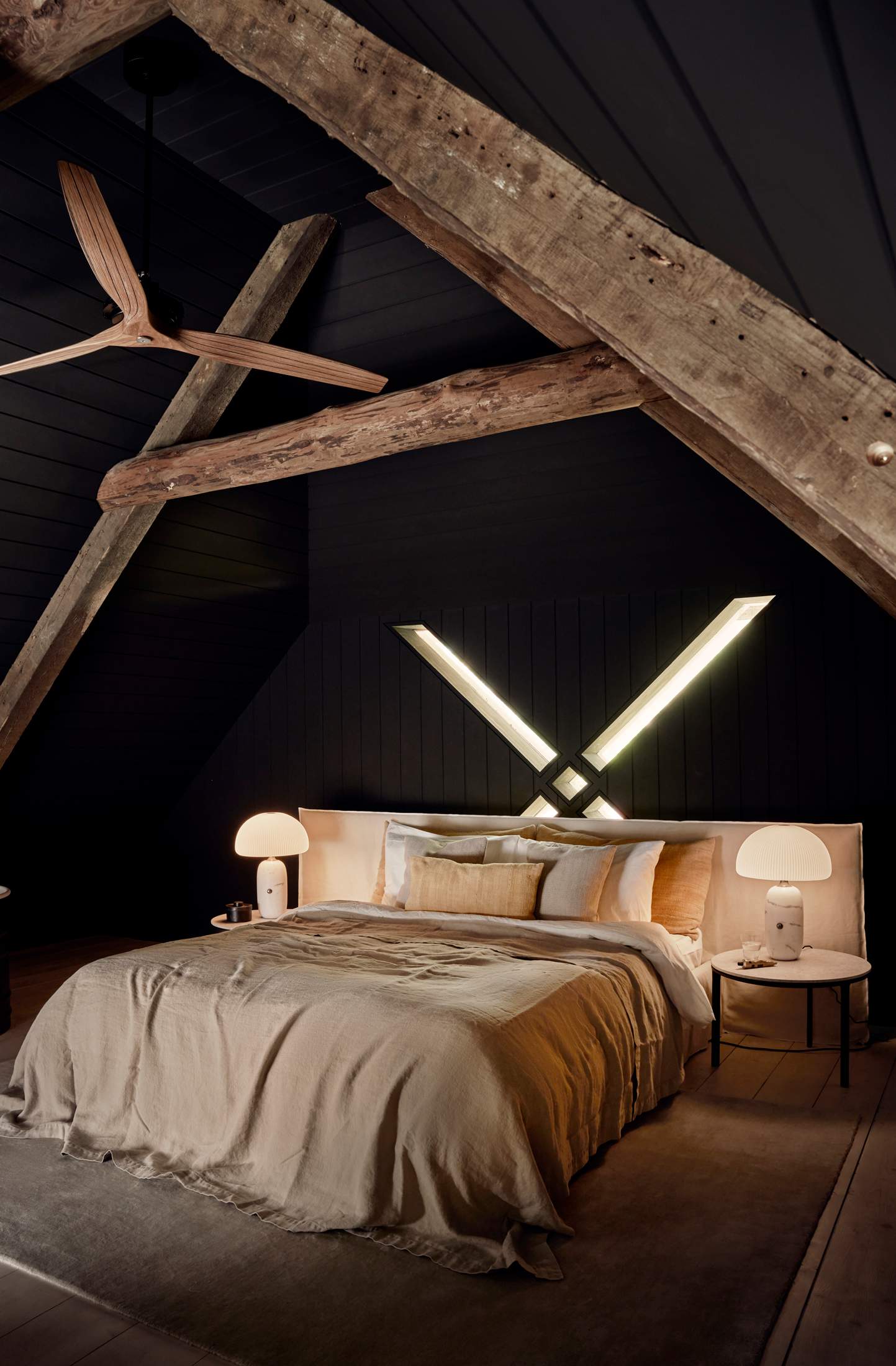
What does all of this tell us about the market and design industry?
The design showroom has been stagnant, whereas the fashion industry has been changing quite rapidly. This might disrupt things a bit. We’re not the first to do this but we do it the Vipp way.
Have you seen this translate into sales?
We’re not short-sighted. We are here for the long haul. If we can have people immersed in our universe, I’m certain that something will come out of it.
vipp.com
The late-in-life entrepreneur
How designer Fujiwo Ishimoto started afresh after retirement.
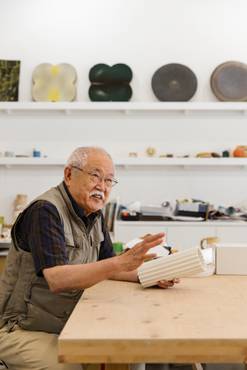
For some, retirement is an opportunity to take a well-earned rest. For 83-year-old Japanese textile designer Fujiwo Ishimoto, however, it marked the moment when he decided to change the course of his life and launch a new business. After nearly five decades in Finland, much of it spent working for lifestyle brand Marimekko, Ishimoto upped sticks in 2020 and moved to Matsuyama, a city of half a million people, in Ehime prefecture on the island of Shikoku. It wasn’t far from where he had grown up. Life had come full circle.
“I always thought that I would come back to Japan,” he says. “I don’t have family in Finland. Eventually, I realised that I had nothing to keep me there.” After designing some 400 textile patterns for Marimekko, he started afresh with his own brand, Mustakivi, which means “black stone” in Finnish. He built a small studio and showroom on a sloping street leading up to a temple in the Dogo neighbourhood – the home of what is said to be the oldest hot spring in Japan. Today he spends his days there designing at a large table and exhibiting his vibrant textiles and ceramics.
“I thought about basing myself in Kyoto but it was too expensive and I didn’t know anybody there,” he says. “In Matsuyama, I’m close to Tobe, my hometown, where I can source clay for my ceramics. My sister and her family live nearby too. Plus, it’s about the same size as Helsinki so the scale feels very familiar.”
Marimekko, which was founded in Helsinki in 1951, has always had a strong audience in Japan. Ishimoto had encountered some of the best Finnish design by the likes of Kaj Franck at a department-store exhibition in Japan in 1964. He started working in graphic design and advertising but left in 1970 to travel, stopping in London, New York and Copenhagen before landing in Finland. “It was November so it was white with snow,” he says. “It rarely snows in Ehime so it was exciting.”
After a few attempts (and rejections), he was hired by Marimekko as a textile designer in 1974 and ended up staying for 32 years. In 1989 he also started working for ceramics brand Arabia, where he built up an impressive body of work with a tightly woven mix of Japanese and Finnish influences. His products and textiles have Finnish names but feature Japanese motifs drawn from nature and are suffused with the two cultures’ shared sense of practicality. Kuppi is a simple ceramic cup for everyday use that would work equally well for green tea as for coffee. The Tuuli cup borrows its design from grass swaying in the breeze. Keiryu is a vivid blue towel inspired by the flow of a mountain stream and manufactured in Imabari, the centre of Japanese towel making, which is also in Ehime.
Many of Ishimoto’s Marimekko designs seem to travel between his homeland and Europe, with influences ranging from Japanese flowers to decorations of village houses that he saw in rural Poland. Nature is still his biggest inspiration – the citrus that grew in his family home or the flowers he noticed alongside a railway track.
In Tobe, a town famous for its porcelain, Ishimoto is now working with ceramics using his own electric kiln. This past summer he covered the showroom walls with ceramic magnolia flowers and exhibited bowls whose brightly coloured hues were inspired by kamifusen, traditional Japanese paper balloons.
Mustakivi has allowed Ishimoto to revisit some of his earlier designs too. On the studio table, there’s a vase that was once rejected for being too complicated to make. A striking tenugui cotton cloth on sale in the shop is printed with an old design that was originally turned down by Marimekko. Another black-and-white cloth features a drawing of a carnation that Ishimoto used on a plate 30 years ago.
The shop is popular for its towels, tote bags, cards, ceramic tableware – made by a factory in Tobe – and cloths printed with his many designs. Despite his achievements, Ishimoto is self-deprecating and seems genuinely surprised by the level of interest in his creations. He likes to work in peace, pursuing the designs that he cares about. As for the future, he is open to offers. He says that he wants to focus more on pottery these days. “Working like this with my hands is keeping me healthy.”
mustakivi.jp


